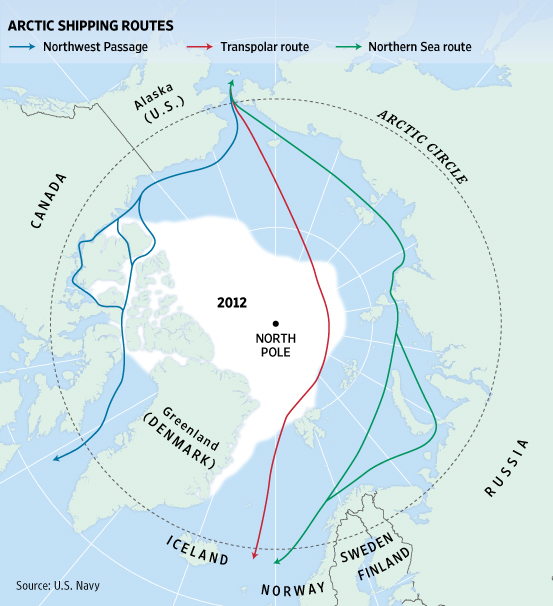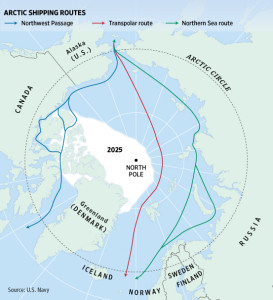Here’s an interesting excerpt from the Wall Street Journal about the ‘Polar Star’ icebreaker that is based in Seattle.
SEATTLE—The 40-year-old Coast Guard icebreaker Polar Star returned to the Arctic Ocean this summer after seven years in semi-retirement, charging into a thinning polar ice sheet that U.S. defense officials predict will give way to new commercial waterways and a resource-rich frontier by mid-century. The Polar Star was originally supposed to be in service for 30 years. Its age and a lack of funding had prompted the Coast Guard to put the ship into semiretirement: afloat but not operational.
This summer, on its first voyage to the Arctic since 2001, veterans on the crew found a very different ocean. “Back in the day there were a lot more challenges, more multi-year ice, you had to pick your spots through it,” said Coast Guard Cmdr. Kenneth Boda, the ship’s executive officer. “This summer we set a course and go…We were teaching our young officers to drive around the thicker stuff but we could have gone right through.”
The changing conditions make the Arctic particularly unpredictable. Lt. j.g. Paul Garcia, on his first icebreaking mission this summer, steered the Polar Star into what the Coast Guard calls a “blind alley.” In the Arctic, moving ice floes can bunch up to form mountainous ridges of ice. When three or four floes ram together, the ice can be so thick that even the Polar Star—capable of 75,000 horsepower—can’t smash through, creating a blind alley.




